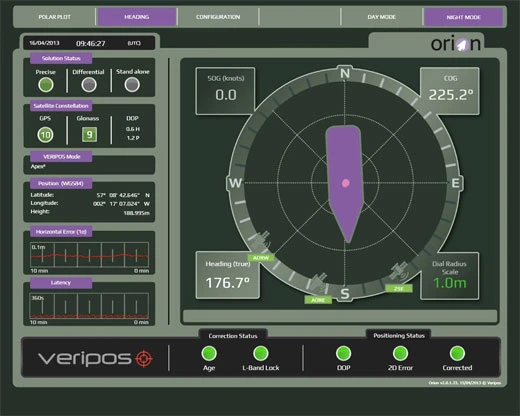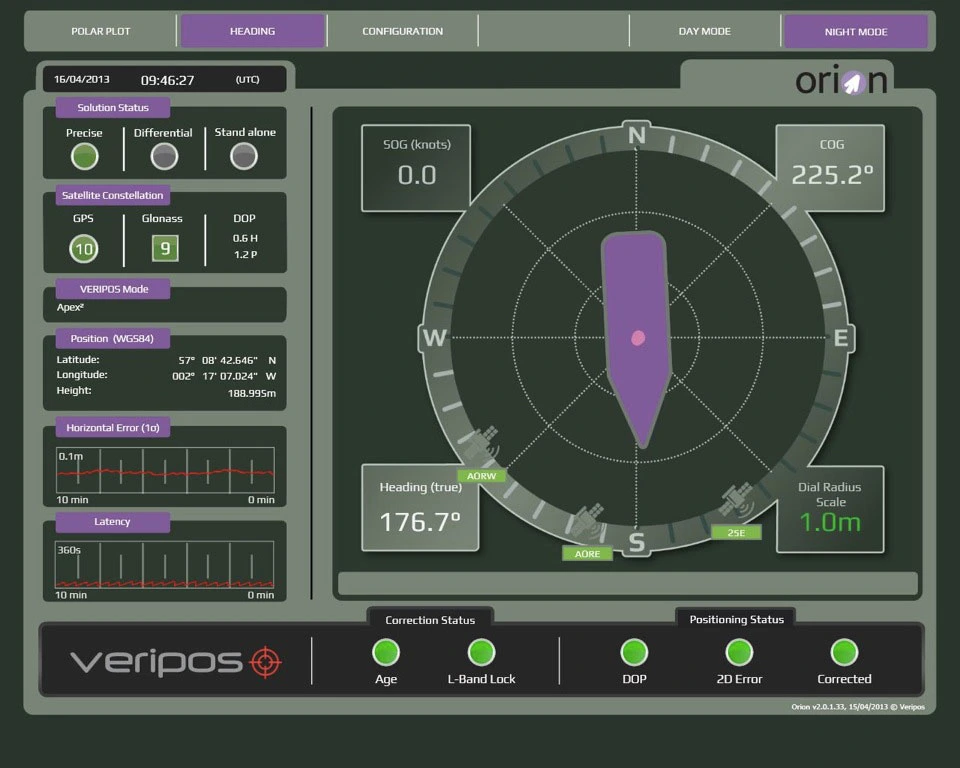

Dynamic positioning (DP) control systems are meant to reliably keep a constant position or track in the water to allow work to be safely and properly performed. Failure of this function can and has endangered lives, property, and the environment. Most modern DP control systems only directly measure and compensate for one of the external forces that moves the vessel. Wind is measured and compensated for, but water current, wave slap, and forces from coupled bodies usually aren’t. Current can have a major effect on position keeping, but it and other unmeasured forces are estimated rather than measured. People are sometimes confused, as the result of this DP model calculation is called “current”, but it is the estimate of all the unknown forces, measurement errors, and model errors. This “current” model is built up over time, is poor at responding to quick changes, and can hide major system faults. DP vessels make small and gradual changes in heading and position to avoid these hidden problems.
Let There Be Light? Wouldn’t it be better to directly measure the major forces acting on the vessel and make the model errors obvious to the operator? That might be embarrassing, if you are a DP control system provider, or if you are a vessel operator who doesn’t keep systems calibrated, and it’s not as easy as it seems. The control system redesign would be costly, if inevitable, and current is a good example of the underlying problems. Real water current is easy to measure in controlled conditions and difficult to measure on a ship.
Speed Logs: Of course, most vessels have a speed log system. This system uses acoustic signals or the electromagnetic properties of water to measure speed. They have several problems. Some speed log systems are only set up to measure ahead speed, some can measure astern speed, and fewer can measure athwart speed. Acoustic Doppler speed logs compare the vessel speed against the bottom in shallow water, and in deep water, compare the ship speed against deeper layers of water (usually 10-30m below the transducer), but we want to know what the water current speed is compared to the ship, not compared to a layer of water whose behavior is unknown. We want to know the current in the layer of the water that the ship is sitting in, so we can determine the associated force.
Measuring Current: There are acoustic systems that can do this. Doppler current profilers look at water currents in different water layers. They are typically used to look down, but can be designed to look to the side or up. Electromagnetic speed logs measure the effect of conductive fluid flowing through sensor coils. Mechanical and differential pressure sensors can also be used, but are not typically deployed. Thrusters could be used for this, if extremely well calibrated and their hull effect well known, as the water current changes the load seen by the thruster. A few fields have external buoys that measure current.
Mismeasuring Current: The assumption that the current flow is smooth and consistent in its application to the vessel is often as false as the assumption of smooth and consistent wind flow. Everyone has seen wind strength and direction vary over time and position – water or wheat makes it obvious. Water current flows can be similarly inconsistent, and can vary with depth and swirl. Doppler current profilers can measure this, but other sensor types need costly arrays of sensors to detect differences. All of them need to measure and compensate for transducer motion through the water, and the water drag effect of the moving body that they are part of. Doppler and electromagnetic (EM) measurements are based on assumptions of water temperature, salinity, and suspended particles, and changes can cause errors. The electronics need to be calibrated and adjusted for changing conditions. Finally, the thruster suction and wash induce water flow that interacts with the hull and can flow over the sensor. Thrusters are often loosely calibrated and measured, and interact with each other and the hull in variable ways, so they are not used to measure current. External buoys are only useful for measuring smooth, consistent flow.
Measurement Redundancy: Many vessels have one speed log and that is obviously not redundant, as a single fault cannot be allowed to disrupt the system. It’s hard enough finding a good place to deploy one current transducer, let alone three of them. Even with acoustic and EM water current transducers, common faults can occur due to changes in expected water properties. EM transducers can be affected by a common electrical fault (e.g. impressed current system, or a power short to ground), and acoustic sensors can be blinded by excessive noise or distorted by specific types and interactions. Finally, the thrusters tend to prevent consistent water current measurement around the vessel. Velocity profilers are normally deployed below, and look down, to get beyond this layer of disturbance.
Making Do: Direct water current measurement is a good idea, but people who have experimented with it have encountered these problems. A 2003 MTS DP Conference paper by Fugro found thruster wash to be a major interference with measuring surface current with their side facing acoustic doppler current profiler, but hoped to make improvement. A 2006 MTS DP Conference paper by Kongsberg explained the difference between DP “current” and water current, and how the effects of water current can be dwarfed by the unknowns that make up DP “current”. This is true and it is why we perform slow turn tests to verify DP scaling and calibration. DP “current” should not change with vessel heading. If it does, then the false information, which this rotating current represents, means the vessel may not be able to properly respond to sudden changes, such as loss of a thruster or thruster group.
Measuring the Right Thing: It is difficult for us to measure current and even wind can be difficult for us to meaningfully measure and use in some circumstances (e.g. platform wind swirl). While it is difficult for us to measure wind and current directly, and in a way that is always meaningful and useful, it is useful to measure the net effect of all forces acting on the vessel. Force = mass times acceleration (F=ma). Accelerators are cheap and easy to redundantly deploy. Mass can be determined by accurate displacement monitoring. If mass and mass distribution is accurately known and the acceleration of each part of the vessel is known, then we know what forces are acting on the vessel and can adjust the thrusters to balance them. We may not be able to measure the forces from current (difficult), wave slap (questionable), or wind (sometimes not useful), but we can measure the total effect of all loads and thrust, and use it to help keep position. Let’s get closer to measuring our unknowns and efficiently responding to them, rather than slowly integrating a solution that may come too late. Inertial navigation systems (INS) try to solve the problem by double integrating from acceleration to position but this increases errors and misses valuable information. Force reference system might be cheaper and more accurate. An accurate force feed forward function could be a useful improvement that addresses a known DP design problem.
Conclusion: Current measurement is possible, but difficult enough that it is not used. Current DP control systems slowly estimate watercurrent, and other unknowns and errors, and display them as DP “current”. This can hide problems, with the system model, that endanger redundancy, so DP operation is slow and cautious, and not suited to rapidly changing conditions. Taking advantage of improved technology to create a redundant force reference system could compensate for the limitations of position reference systems, inertial navigation systems, and environmental sensors. There is no current solution for water current measurement, and contemporary DP “current” modeling is a stop gap measure, but we should be able to improve DP operation with a force reference system. In the meantime, distrust your DP current, keep an eye on it, and make small changes when on DP.







